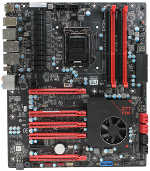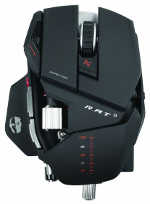These are the basic components that need to be a part of a computer in order for it to function properly.
- Motherboard (mobo)
- The Motherboard is the PCB (printed circuit board) that everything else in the computer connects to.
- Memory (RAM)
- Random Access Memory provides a place for the computer to store active software processes for quick access by the CPU. RAM is volatile memory, meaning that when the computer is shur down everything is deleted from the RAM.
- Processor (CPU)
- The Processor is a chip in a computer that carries out instructions of software using basic arithmatic (math), logical, and input/output operations of the system.
- CPU Cooler
- The CPU Cooler keeps the processor cold during operation, they tend to get quite hot. There are several ways to cool a processor, the most common being air cooling. I will go into detail in the overclocking tab. Most processors come with a heatsink and fan, and for most people this eill adequately cool the cpu.
- Power Supply (PSU)
- The power supply unit is just a big transformer that converts the 120 volts of AC current from the wall outlet to 12 and 5 volt lines of DC current to power all the components in the computer.
- Hard Disk Drive (HDD) or Solid State Drive (SSD)
- The Hard Drive or Solid State Drive contains your operating system, software, documents, and all the other data stored on your computer. As of right now hard disk drives (aka mechanical drives) can have much higher capacities and are much cheaper; you can find a 2 TB drive for ~$120. Mechanical drives have moving parts, and therefore can fail. Solid state drives, on the other hand, have no moving parts, are much more reliable, and have immensely faster read and write speeds compared to mechanical drives.
- Graphics Card (VGA or GPU)
- A discrete (seperate) Graphics Card isn't always needed, as many motherboards have integrated (built-in) graphics; but there are motherboards, especially high end mobos, that do not. Having a discrete graphics processing unit takes some strain off of the cpu by handling everything displayed on the monitor(s).
The following items are not absolutely neccesary, but they usually help a lot.
- Case
- A case is just a container to hold all the components together in one place. A case isn't necessary though, a computer will work even if all the parts are just laying on a table, as long as the surface doesn't conduct electricity.
- A case is just a container to hold all the components together in one place. A case isn't necessary though, a computer will work even if all the parts are just laying on a table, as long as the surface doesn't conduct electricity.
- Peripherals
- Peripherals are devices connected to a computer that expand it's capabilities, allowing more to be done. There are 3 types of peripherals: input, output, and storage.
- Types of peripherals
- Input
- Mouse
- Keyboard
- Touchscreen
- Scanner
- Graphics Tablet
- Output
- Monitor
- Speakers
- Printer
- Storage
- Internal and External Hard Drive and/or Solid State Drive - these are peripherals, but at least 1 is needed for the operating system.
- Optical Drive - CD/DVD/Blu-Ray Drive
- Flash Drive
- Input
- Peripherals are devices connected to a computer that expand it's capabilities, allowing more to be done. There are 3 types of peripherals: input, output, and storage.

Mobo

RAM

CPU (front and back)

PSU

HDD (without cover)

GPU

Mouse